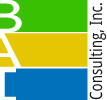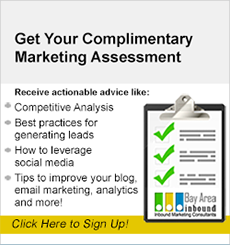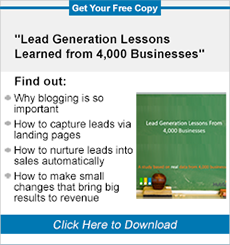
I was fortunate to learn a lot of the now-dubbed "Agile methodologies" many years ago, when reporting to the VP of Engineering, Juan Grau, at Proxim. He taught his teams to start by building the minimum viable product among many other agile methodologies.
Here they are:
- Build the minimum viable product in order to produce often (aka start small)
- Break big projects (called stories about customers needs in Agile) into small tasks and assign them to people
- Short documentation
- Track progress
- Weekly sprints
- Daily standups
- Continuously evaluate our own performance and make improvements
I have used a lot of these methodologies in life, for many years, because they work. Below I give some examples where it has helped me, and my family, to succeed.
"Starting Small" for Success
Starting Tiny for Exercising
Last year starting small to exercise worked a lot better for me than telling myself, "I'm really out of shape, I need to work out twice a day", after I had gotten out of my life-long habit of exercising daily, for a year.
Instead, I decided to start small, with just 12 minutes a day on my treadmill, then moved to my husband's-stationary-sit-down bike, because it was even easier, ha. Started playing pickleball daily with my husband, then biking with him daily. Now we are skiing once a week and I'm playing pickleball two to three hours a day.
I worked out ~320 times in 2020, vs ~20 times in 2019 by starting small, instead of thinking I had to do a lot.

|

|

|
Cleaning Kids Rooms by Counting to Ten
I taught my daughter to clean up her room, at a fairly young age, by counting to ten while hanging up just 10 items. I told her, "Usually you can keep going after ten, but if not, you are that much closer to a clean room".
Counting to ten was much more effective for her than her Dad constantly putting pressure on her to clean her room. She adapted it to hanging everything up, at once, in front of the TV, since she had very little free time.
She's always been an extremely hard worker in school, sports, church, art, and her jobs, but every time she cleaned her room, she did a major reorg. Of course, it was overwhelming to face that much work when she was already busy and tired. It was very agile of her to start small, then make improvements.
Starting Small to Develop New Products
Engineers, are problem-solvers by profession, that's why they "start small" to build products.
Below, I give you a few details of why starting small is a good idea in developing new products:
- to climb learning curves and not make tasks so big that people avoid them
- to save money and make sure there would be good Return on Investment (ROI) for us and for our customers
- to get something done while waiting for engineers to roll off other projects
- to continuously monitor customer requirements, competitive, market landscape, emerging standards and technologies that we might use to ensure success in the market
- to do partnering activities in order to speed-to-market new offerings without building everything ourselves
New Products, Start with a Known Entity, and Make Changes
As you probably know, another iteration of "starting small", for tech companies, is starting with their existing product, and making changes to keep up with an evolving market.
I'm sure you recognize that tech products get more and better features as they go, when you download your new iOS, upgrade your windows version, or upgrade to a new phone.
Here is how Proxim made changes to existing products over and over to create new product families in small steps below:
| RangeLAN2 |
|
which became |
|
| Low Cost 802.11 |
|
| which became | |
| Symphony |
|
| which became | |
| HomeRF |
|
Marketing via Agile Methods
I use agile methods for demand generation and product marketing as well.
I start by identifying what tech companies have done well, and make improvements only where needed. Which, I feel, is the agile way to do marketing. Here are the steps...
- Talk to the sales, marketing, and executives to understand target personas, target companies by vertical and size, and find out what's going well, and what isn't. Ask where they are stalling in the sales cycle
- Evaluate what they have already done, by looking at their analytics in their marketing automation software and their paid channel performance. Do competitive analysis and target keyword analysis
- Test positioning and messaging using a/b tests on email titles and CTAs via marketing automation software
- Investigate their target persona's pain points and how they talk about them on Linkedin Groups and in forums by asking questions. All of this research leads to campaign epiphany by creating offers that answer objections in the sales cycle, and position products and services properly
- Brainstorm titles, then set goals for blogging, creating educational offers, and publishing schedule for channels required to reach new targeted goals
- Look at their offers to see if they were created with best practices, if not fix them
- Find their top-performing landing pages to see if we can spin them for multiple verticals and personas.
To recap:
- do research
- target and position properly
- use ABM to customize offers
- create content that creates aha moments on how we solve customer problems and that answers questions and objections the top, middle, and bottom-of-the funnel
- publishing to multiple channels
- use analytics and a/b testing to see what's working well and spin those landing pages for multiple target personas and verticals
- do SEO activities not just PPC to drive organic traffic
Short Documentation
Agile believes, like I do, that People are more likely to read short documentation, so keeping things brief, makes sense for a lot of reasons.A blog article or simple email with relevant bullets, can sometimes be more effective at communicating the benefits of your product, than the whitepaper or eBook attached to it, because prospects may never read it; So don't waste those opportunities to communicate.
My rules for communication as a marketer are:
- be brief and get to the point!
- if you are not Budweiser or apple, you need every ad to reinforce your position and branding, where you are in the market, what pain point you solve, why you are better than the competition. Include proof of ROI and technical feasibility if possible.
- use clear labels so they know what you are talking about
- use bullets for benefits, never more than seven, preferably not more than four
- don't assume they know anything about your offerings, just because you do
- assume prospects are only interested if your product solves their pain point, so don't spam people (ever), and especially if they haven't shown interest by downloading and aren't in your very-narrowly-defined target. Never do daily emails, more like once a month with an amazing offer, is how I have had the best success.
- read text 15 times to get rid of errors, retest links, use graphics to clarify points
This is a video I did for Imanami, a top-of-the-funnel offer, designed to let people know in under a minute what all four of Imanami's products can do to upsell existing customers on other products and sell to new ones.
Hope this article has shown you how agile methods can lead to success in any kind of project, including marketing.
--------------------------------------
Laurie is Principal at Bay Area Inbound, a marketing agency that focuses on digital marketing methods to quickly increase revenue for tech companies.
Contact: laurie@bayareainbound.com
For more tips and tricks, download our offers:


